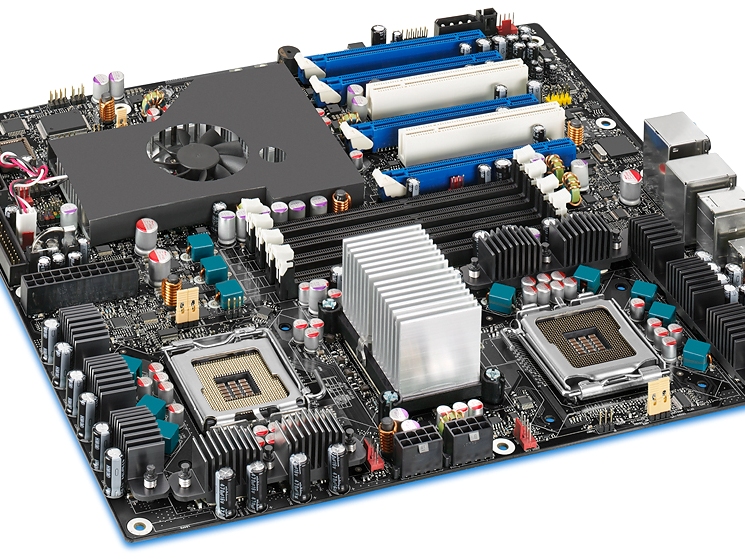Are PC gamers ready for Skulltrail?
Intel Dual Socket Extreme Desktop Platform doesn't have the same ring, does it?

Intel officially launched its new 8-core super platform known as Skulltrail at the Games Developers Conference in San Francisco this week. Intel hopes the platform - which we’ve already taken an in-depth look at – will appeal to the enthusiast and gaming community.
The move was, of course, pre-empted to a certain extent by AMD’s Spider platform, but, unlike Intel’s solution, Spider doesn’t have dual-socket tech on the board. As Jeremy Laird wrote when he got hands on with the platform, “Skulltrail is intended to be a crushing display of technical superiority by Intel”.
The dual CPU sockets are filled with a pair of Core 2 Extreme QX9975 processors. Each chip offers 12MB of L2 cache, a fast 1600 MHz system bus and packs four cores running at 3.2GHz, the same frequency as Intel's top single-socket desktop CPU, the QX9770. We were lucky enough to see a demo of the platform running while we were at CES and my, it absolutely flies. We saw it rendering the test image in Cinebench scarily fast.
What's in a name?
Intel is now looking to distance the platform from the ‘Skulltrail’ moniker which, although a codename, was hardly the most subtle way of announcing its future arrival at past Intel Developer forums. Now the corporation has given it a predictably boring title – the Intel Dual Socket Extreme Desktop Platform. Mind you, Intel isn’t intending to sell that branding to consumers, instead preferring to stick with processor-based branding.
“When it comes to delivering innovation to the ultimate enthusiast, our new 8-core desktop platform is a winner,” said Jeff McCrea, senior vice president and general manager of Intel’s Digital Home Group.
“The ground-breaking Intel Desktop Board D5400XS enables the flexibility to pair a variety of quad graphics solutions with two of our fastest desktop processors. The result is stunning PC performance.” The chipset that underpins Skulltrail is actually a mildly tweaked version of the 5400 series server chipset.
Sign up for breaking news, reviews, opinion, top tech deals, and more.
Robert A. Duffy, programming director at Quake developer id Software was wheeled out by Intel to eulogise about the platform. “Having eight powerful Intel cores in a single machine helps our team create and test our latest titles at record speed.
"We have seen one of our most time-consuming asset generation processes cut from over four hours to under 20 minutes by utilizing all eight cores and threading the generation code. Long term this translates to better games on the market faster than previously possible."
Skulltrail includes support for both Nvidia’s SLI and ATI’s CrossFire multi-card graphics.
Dan (Twitter, Google+) is TechRadar's Former Deputy Editor and is now in charge at our sister site T3.com. Covering all things computing, internet and mobile he's a seasoned regular at major tech shows such as CES, IFA and Mobile World Congress. Dan has also been a tech expert for many outlets including BBC Radio 4, 5Live and the World Service, The Sun and ITV News.